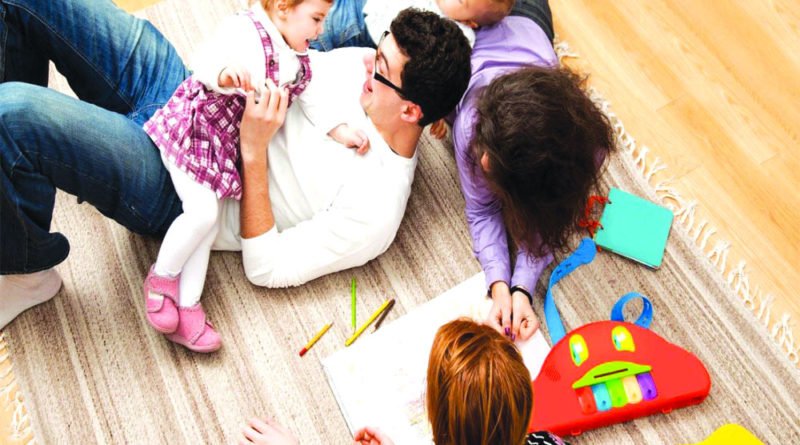Art of learning
Sumedha Khoche and Shireen Sultana believe that parents can use the Montessori methods of teaching to devise activities for children using things easily available at home
The almost shutting down of the world and the restrictions around us has made not just adults but even children miss being outdoors. Staying at home all day can become tiresome for these active energy bundles and we need to think creatively to make staying at home fun for them. The Montessori teaching method fits in perfectly at this time and can be used to devise activities with things that are easily available at home. Children can learn important skills in a fun way and stay happily engaged.
Core Montessori ideas are supported by a strong body of evidence in developmental psychology. Dr Montessori was a physician and brought an observation-based, practical and holistic approach to the learning and development. Though over 100 years old, its concepts are extremely relevant in an age where children are exposed to screens even before getting their first tooth. Here are a few simple activity ideas that you can be done at home without any fancy equipment. A single activity can apply to more than one concept and can be tweaked to suit any situation.
Learn by doing
Children learn best with hands-on experience. Research has shown that we are more likely to remember a concept and understand it clearly when we do it on our own, rather than reading or simply hearing about it.
- Involve them in simple chores with clear and precise step-by-step instructions and appropriate child-sized tools. Let them keep toys back on shelves or stack books by size. Putting clothes in the laundry basket, sorting clothes by colour or texture, placing cutlery in the correct shelves or folding small clothes helps build cognitive skills and logical thinking. Older children can help set and clear the table or wipe surfaces. This also instills a sense of discipline, confidence and accomplishment.
- Learning new words and spelling can become a fun activity by enacting the words through charades and forming letters using body parts.
- Science is best understood with experiments. Seeds like coriander and fenugreek planted in discarded containers are perfect opportunities to observe stages of plant growth. Growing sprouts can demonstrate germination and double up as a healthy snack. Experiments with baking in the kitchen can yield delicious outcomes.
- Water play can be used to understand measurement, volume and gravity right from an early age when a child scoops and pours water into different containers.
Let children decide
The Montessori methods are largely self-motivated as kids learn better when they are interested in a subject. They are free to choose what and how they want to learn with reasonable boundaries set by the parent.
- Encourage storytelling where children are free to build a story according to their imagination and modify vocabulary learning activities as per the theme. Open ended discussion gives the child more opportunity to think creatively and share thoughts.
- If a child is interested in buildings and bridges, let them use blocks to build a tower. Ask them to make the base in different materials and size to understand its impact.
- Don’t give away the answers but just enough information to pique interest. This encourages children to think and challenge their brain.
Sensory tools
Most Montessori materials are designed to engage all the senses. These can be easily replicated at home with everyday items.
- Tactile development is believed to lead to cognitive thinking. A child’s sense of touch is highly developed right from birth. Play dough can be made easily at home and used for kneading, pinching and shaping to home fine motor skills. Shapes and alphabets cut out of sandpaper or textured material make learning fun.
- Different surfaces throughout the house can be a great sensory experience for the child. Let them explore rough and smooth floors, textures of wood and stone and reflective mirrors.
- Create a set that activates the sense of smell. Toddlers will react differently to the aroma of cinnamon, lemon, cloves or mild perfume.
- Playing with a rattle is a favourite activity for infants. Move the rattle to vary the volume and direction of the sound or use bells or drum on the table with a spoon. The child also understands spatial context and a sense of direction through this simple activity.
Attention and focus
Faced with so many options, children tend to get distracted at times. Enabling them to direct their attention in a certain direction improves concentration.
Goal-oriented activities help channel effort and focus. For babies, this could mean kicking a ball or grasping a favourite toy.
Use a mat or tray to place objects that relate to a certain activity. This directs focus on what is in front rather than all over the place. Similar to a work desk for adults, this defines a workspace and increases concentration.
Children get confused with if they are faced with too many choices and will feel empowered when allowed to make simple decisions. Limit the number of toys that a child plays with to avoid over-stimulation and boredom within a short period of time.
Schedules and routines give a sense of order and familiarity. Follow a set time for meals, naps and bedtime with activities that can be associated with them. Reading a bedtime story, dimming lights and a massage are signals of bedtime.
Movement enhances learning
Moving the limbs help the brain cells build a connection between a specific movement and its outcome.
- For infants, grasping objects like a toy kept just out of reach encourages movement, dexterity and development of fine motor skills.
- The benefits of tummy time are immense. Activities done by a baby while s/he is on his/her belly build core strength, neck and upper arm muscles. Let the baby crawl and explore, without worrying about dirty knees and legs.
- Use coloured tape or chalk to draw zigzag lines on the floor with arrows or create a simple obstacle course using shoes or soft toys. Children will enjoy navigating the path with additional rules of jumping, skipping or running at different points of the course. Cushions can become landing points and a rolled up rug could work as a balance beam.
Do things together
Children love to act like adults and doing things that they see their parents do. Activities designed around this make them feel like grown-ups and are perfect opportunities for you to bond with your child.
- Age-appropriate tasks like carrying a jug and watering the plants are simple things that kids will enjoy doing.
- Working and learning together can be more fun at times. Set up a play desk or a pretend desk where your child can work with you. A simple jigsaw puzzle, a favourite book or colours can keep them busy while you work.
- Set things that they may require within reach. Providing a stool in the bathroom for easy access to the sink, fixing the towel hook at a lower height, child-safe scissors or plastic knives for them to cut parboiled vegetables and fruit gives the child a chance to become independent.
Handling tantrums
When children misbehave, taking a deep breath before reacting is sometimes all it takes to restore calm.
- Respond to the child’s feelings and needs in a sensitive manner. Asking why they did something helps them share their thoughts through open communication.
- While being strict on rules, be willing to discuss the reasons and alter them if needed.
- Consider taking away the freedom to choose for a while, while still allowing them to do certain activities. This instills the importance of following rules and the value of freedom of choice.
- Sumedha Khoche/Shireen Sultana
(The authors are the co-founders of KinderPass.)
Source : The Pioneer




